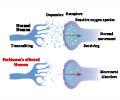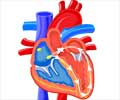New non-pharmacological and non-invasive therapies could provide substantial relief and help restore gait function in Parkinson's disease.

Gait-combined closed-loop brain stimulation can improve walking dynamics in Parkinsonian gait disturbances
Go to source).
Addressing Gait Disorders in Parkinson’s Disease
Parkinson’s disease (PD) is a debilitating neurodegenerative disease characterized by motor function decline, particularly in relation to gait disorders. These gait disorders manifest as decreased step length, reduced arm swing, slow movements, rigidity, and postural instability, which are prevalent among patients with PD. While non-pharmacological approaches like transcranial direct current stimulation show promise in improving motor function, recent research focuses on gait-combined closed-loop stimulation, which synchronizes brain stimulation with the individual's gait rhythm. “We recently developed a novel neuromodulation approach using gait-combined closed-loop transcranial electrical stimulation (tES) and demonstrated promising gait improvements in patients who are post-stroke. Here, we tested the efficacy of this intervention in patients with Parkinsonian gait disturbances,” explains lead author Ippei Nojima from Shinshu University and Nagoya City University, Japan.‘Innovative intervention aimed at enhancing gait offered newfound optimism for individuals dealing with Parkinson's disease. #neurology’





To this end, the clinical researchers from Japan recruited twenty-three patients with PD or Parkinson’s syndrome. All study participants were randomly assigned to receive either the active treatment or a “sham” treatment that mimics the active treatment but does not offer any therapeutic benefit. During the course of the trial, an electrode carrying a low current (up to 2 mA) was externally affixed to the occipital region of the head. A reference electrode was then placed in the neck region to establish a stable electrical reference point and to complete the electrical circuit. The treatment included performing tES on the cerebellum in a non-invasive manner. The brain side showing severe impact was specifically targeted during the electrotherapy.
“Gait disturbance lowers activities of daily living in patients with PD and related disorders. However, the effectiveness of pharmacological, surgical, and rehabilitative treatments is limited. Our novel intervention might be able to improve physical function for not just patients with PD but also for those with other disabilities,” comments senior author Yoshino Ueki from the Department of Rehabilitation Medicine at Nagoya City University.
The cerebellum plays a key role in gait control. Therefore, the electrical stimulation of this region is likely to exert therapeutic benefits. The therapy showed encouraging results after just ten repetitions. The treatment group showed a significant improvement in gait parameters including speed, gait symmetry, and stride length.
Professor Nojima says, “These findings showed that gait-combined closed-loop tES over the cerebellum improved Parkinsonian gait disturbances, possibly through the modulation of brain networks generating gait rhythms.”
Advertisement
“Patients with impacted gait have restricted daily activities. We successfully developed a new non-pharmacological and non-invasive intervention for the rehabilitation of patients with PD and other neurological disorders. Our breakthrough method could be used to restore gait in these patients,” concludes Professor Ueki.
Advertisement
Reference:
- Gait-combined closed-loop brain stimulation can improve walking dynamics in Parkinsonian gait disturbances - (https://jnnp.bmj.com/content/early/2023/06/09/jnnp-2022-329966)















